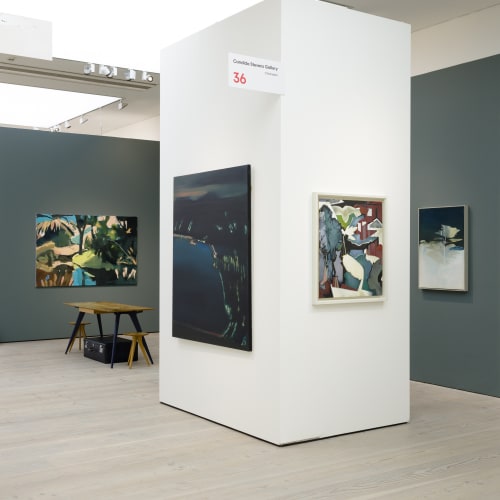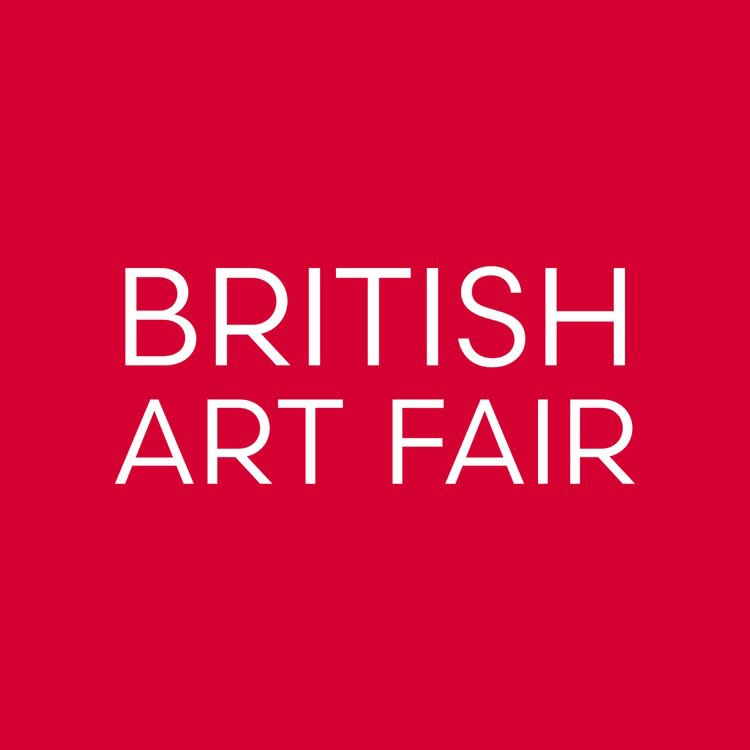Thursday 29 September 12pm – 9.30pm
Collectors’ Preview
Friday 30 September 11am – 8pm
Meet the Artists 5pm-8pm
Saturday 1 October
11am – 6pm
Sunday 2 October
11am – 5pm
We look forward to presenting the work of five women artists in their 50s, 60s and 70s.
Pippa Blake, b. 1954
Blake studied Fine Art at Camberwell College of Art (1972 - 1976) gaining BA Honours (First Class). In 2005 she graduated from the Visual Arts Programme, West Dean College with a Postgraduate Diploma (Distinction). Blake has travelled the world extensively. She serves as a founding Trustee for BLAKE, an organisation in New Zealand inspiring environmental leadership.
This recent series of painting, Power Plant, considers the threats to our waterways, power plants are one of the three main pollutants to waterways globally. They show a hidden pond above Faslane nuclear submarine base used to supply water to what was Shandon Hydro in Victorian times. The title of the series also acknowledges the enduring power of nature to recover, given the chance.
Alice Kettle, b.1961
Kettle is internationally renowned for being a pioneer of her art form, with an application and process that makes her a unique creator and maker of art. Her work is regarded as boundary breaking and contemporary in its process, yet it also evokes a deep sense of the fundamental with its themes. Kettle depicts contemporary events and the experience of being in the world in her stitched tales. She draws references from the history of figurative textiles and monumental narrative tapestry.
Daphne is a piece made in response to recent events in the UK. In Greek mythology Daphne became the unwilling object of the infatuation of Apollo and was chased against her wishes.
Kerry Harding, b.1972
Harding holds a BA in Fine Art from Ruskin School of Art, Oxford University (1991-94) and an MA in painting from Falmouth (2000-03).
This series of paintings combines influences from art history including the Romanticism of Caspar David Friedrich (1774-1840) and the photorealism of Gerhard Richter b.1932. The canvases are repeatedly reworked, sometimes over several years, and bear the scars of being layered with paint, stripped and scraped numerous times. Centuries of erosion and deposition that have formed, and continue to shape, the coastline are mirrored in this physical working and reworking of the surface.
Olivia Stanton, b.1949
Stanton (b.1949) trained at Byam School of Art (now part of Central Saint Martins), London from 1973-77 under the tutelage of Wynn Jones and Bill Jacklin. Her work uses rich colour to fuse moments of bold geometry with hints of natural form, creating sophisticated and visually stunning paintings. Her paintings are always a response to contemporary events, with titles like Track & Trace and Rollout.
Olivia’s work is strongly rooted in the history of British landscape painting. Influences include Ivon Hitchens, Paul Nash, R B Kitaj, Gillian Ayres and further back to Gaugin, all for their bold use of colour.
Irene Lees, b.1943
Irene Lees’ ever-questioning mind, her curiosity for human psychology, social history and injustice, is the driving force behind her work. Critically engaged in contemporary society, art history and literature, her work often reflects on the ways the past resonates with current issues, and how we can use our understanding of the past as a lens through which to view the present. She directs her considerable mastery with a pen to achieve an almost digital like rendering, using either a continuous line or weaving together researched text to form her ‘artwork essays’.
Anonymity and Visual invisibility are two pieces made after Lees attended a rally protesting against the Iraq war in London. Finding herself looking into the eyes of a lady in a full burqa it was the connection felt in the eye contact that inspired these drawings, where the eyes are empty.






